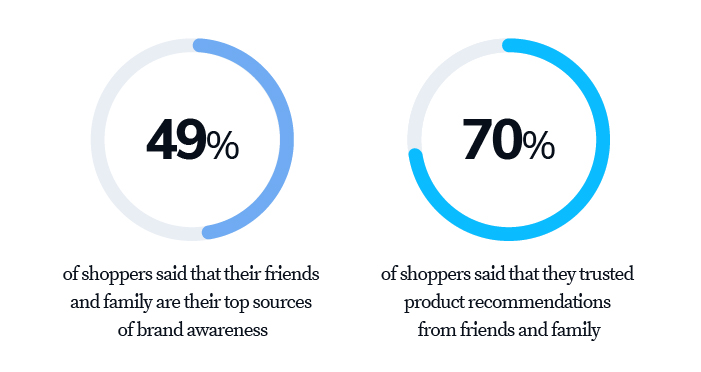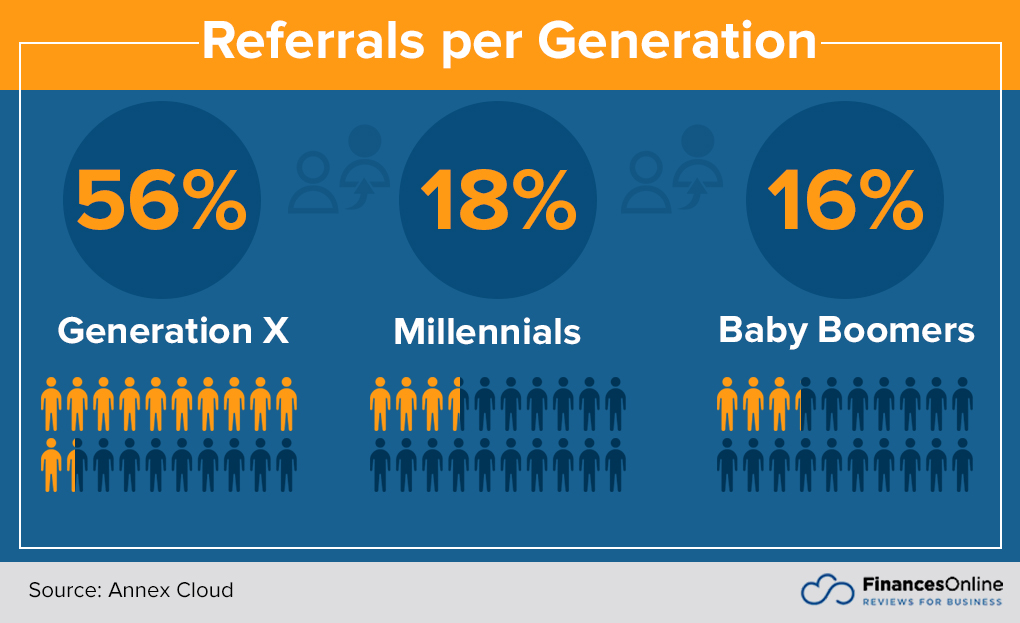For example, Bob has just bought a SaaS product with teams telephony that makes it easy for him to hold a secure conference call. He is so impressed with the product that he actively tells friends in business how good it is. He may even connect them with the sales agent he connected with.
Your ultimate goal when looking at customer referrals is to transform happy customers into reviewers and brand ambassadors who do not only post about your business, they actively refer people to you. This can be like having an extra person marketing on your behalf, something that can be crucial if you operate on a limited budget as many small businesses and startups do.
The benefits of customer referrals
You probably already like the idea of extra marketing staff that doesn’t receive salaries (though we will look at reward schemes later). Referrals can also make things easier for your sales team. Your business may already be partnering with other brands or agencies and, in many ways, this is a version of that relationship marketing. But, what are the actual (and tangible) benefits of utilizing customer referrals or word-of-mouth marketing?
1. Cost-effectiveness
Using only traditional marketing methods, your CAC involves the money you spend on any sort of advertising and marketing. With customer referrals, you have substantially less outlay but you are acquiring customers who have a higher average lifetime value (LTV) than the usual customers you onboard.
2. Better customers
Why would referred customers be better than traditionally acquired customers? You can think of referred customers as already having a relationship with your brand, albeit a proxy one through the person referring them. That relationship means that the customers that sign up with you via a referral represent an increased chance of conversion – they’re already invested.
Combined with higher LTV, this clearly shows that referred customers are of great value to your brand and should be a primary target when it comes to your strategy.
3. Maximized sharing
While the old concept of word of mouth marketing was good, the multiple platforms and marketing channels now available means that you need to go beyond that and have your loyal customers and brand advocates singing your praises from the rooftops (virtual rooftops of course). In order to get to that point, you need to find ways of standardizing and maximizing the sharing process.
There is also the question of incentivizing the process to encourage as much sharing as possible. You may already have a loyalty scheme in place to reward your current customers so why not extend that and offer additional incentives for them to share their experiences in as many places as possible?
Customer referral reward program
Of course, offering incentives is not the only way to encourage your customers to refer their friends. But how do you decide on what referral incentives to offer?
It’s worth considering a tiered structure to your referral campaign where your best customers and brand advocates receive higher levels of rewards for every successful referral. Some incentives to think about include:
- Discounts. People love saving money so offering discounts on any future purchases is not only a great incentive to refer, but it also means future sales for you.
- Free products. Customers probably love free stuff even more than discounts. You could choose to give away branded items that promote your company, limited edition products, or simply stock that’s not selling as well that you want to clear.
- Cash or cashback schemes. If using this option, then two-sided incentives (where both parties are rewarded) work best as they represent a win-win situation for all parties.
- CSR (corporate social responsibility). CSR is not only good PR, it can have a positive impact on any charities you work with. By making a charity donation a reward, you pass on the feel-good factor to our loyal customers.
- Free subscriptions. If you offer any sort of subscription, giving a certain period free can not only serve as an incentive but can also encourage the customer to sign up for a paid subscription later.
- Gift cards. Offering these as incentives means the customer can either spend the amount on themselves or pass the gift coupon on to friends or family. As with discounts, it means future sales for you with the added advantage of expiry dates so you know, roughly, when the gift amount will be spent by.
You do not need to choose one type of incentive; you can offer different rewards as a tiered structure or even offer a choice of rewards equating to the same value. For example, let’s say you offer a $25 reward when a customer refers someone and they make a purchase. That $25 could be given as cash, as a gift card, as a free product, and so on.
How to build a customer referral program


















